A short summary
Real estate investors who are taking on fixer-upper projects will typically need a loan to do so. Luckily, there are a host of options, and investors simply need to figure out their strategy and pick the best loan to suit their needs. Let’s take a look at the best fixer-upper loans for investors.
Table of Contents
Fix and flip projects are one of the most common strategies for real estate investors to make money from. Buying a home, making the necessary improvements, and then selling it again, is a popular way to invest in real estate and make a profit within a shorter period of time. The trick comes with getting financing for these projects. Here’s where fixer-upper loans come in. We’ll take a look at the best fixer-upper loans for investors and how you can qualify for them.
What is a fixer-upper loan?
Fixer-upper loans, also called renovation loans, are used for repairing and renovating houses. For investors, these can be an ideal solution for fix and flip properties. Fixer-upper loans can offer investors enough to buy the property, and then renovate it as well. The loans are granted based on what the After Repair Value (ARV) of the house is.
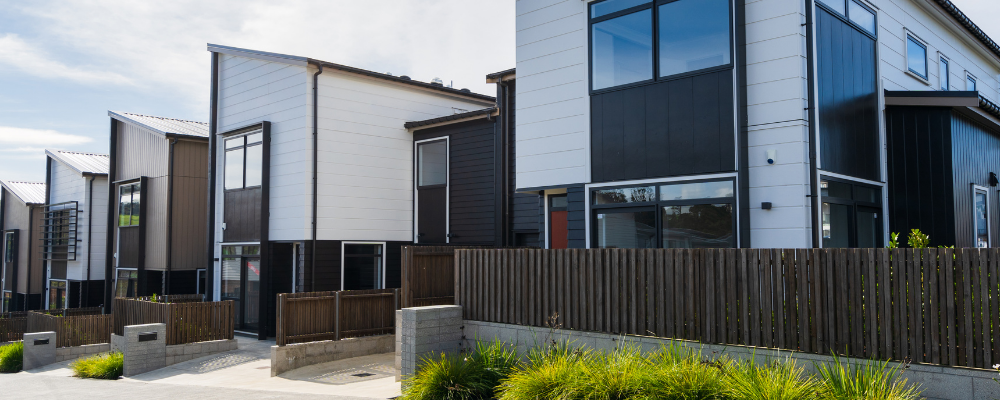
Can you get a conventional loan for a fixer-upper?
You can use a conventional mortgage to buy a home that you intend to rehab, however you will still need a plan for how you will finance the renovations themselves. In this case you’ll need to get a personal loan, HELOC or another type of loan for the rehab part of the project.
Conventional loans are popular because they offer lower interest rates and therefore the monthly repayment amount is lower. The drawback to this method is the fact that you’ll need a separate source of funding for the rehab part.
To qualify for a conventional loan, you’ll typically need a higher credit score, and your debt should amount to no more than 43% to 50% of your gross monthly income. An advantage to this type of loan is that you can get away with only having to put down a deposit of 5%.
The 5 main types of fixer-upper loans for investors
1. Fix and Flip Loans
Fix and flip loans, such as the one New Silver offers real estate investors, are short-term loans that offer investors enough money to buy a property and make improvements to it, before they sell it again for profit. These loans often require the interest-only payments for the initial part of the loan and a balloon payment thereafter. Which makes them perfectly suited to investors doing fix and flip projects.
One drawback to fix and lip loans is that the interest rates on these loans can be higher, due to the nature of the loans, however this is only for a short-term loan and doesn’t need to be a big deterrent for investors. On the flip side however, these loans are easier to qualify for and funding is usually granted quickly. For real estate investors doing fixer-upper projects, this is a big plus.
Qualification criteria: These vary from lender to lender, however, fix and flip loans through private lenders are usually more focused on the real estate deal itself instead of the main focus being on the borrower’s financial history. A certain credit score may be a requirement (sometimes around 620), but it’s likely not as high as other loans would require. The After Repair Value (ARV) of the property will come into play when you’re applying for a fix and flip loan, as well as potential ROI of the property. The borrower’s investing history may also be a factor in the loan approval.
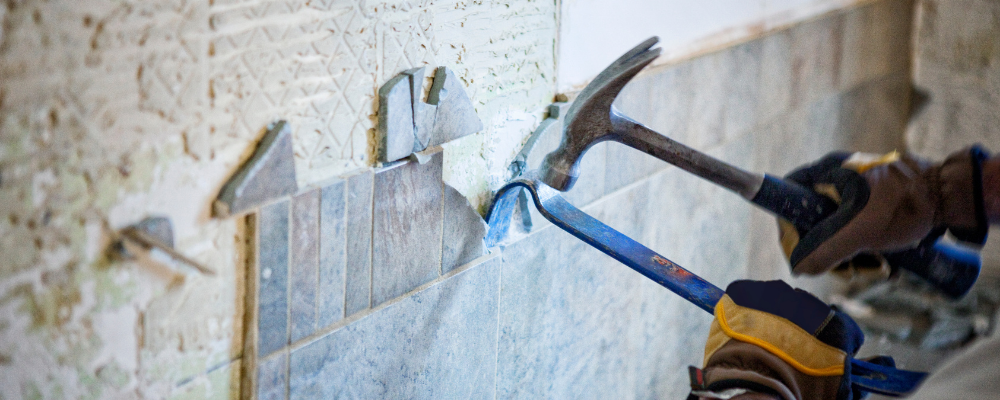
2. Fix to Rent Loans
Fix to rent loans provide the funds for a property purchase, then the rehab of the property in order to rent out and eventually refinance in order to buy another investment property. This is also called the BRRR strategy, which allows investors to maximize different avenues of income by rehabbing a property and the using the equity in it to refinance another purchase.
Fix to rent loans typically cover the initial purchase of the property and the renovations, which can be paid off over a longer period of time. Some offer an initial period of interest-only payments, which is intended for the rehab phase of the project, thereafter the loan converts into a long-term rental loan. This is an ideal solution for real estate investors looking to purchase a property, fix it up and then rent it out for the long term.
For example, New Silver’s Rent Loan which offers investors a 30-year fixed product for stabilized properties. The interest rate on this product starts at 5.75% and the lender offers borrowers up to 80% of the purchase price.
Application criteria: New Silver’s Rent Loan requires a minimum FICO score of 680, however no previous experience is required and a cash out refinance is offered on this loan. Many other Fix to Rent loans are similar in their application criteria, with the minimum and maximum loan amounts varying, as well as the type of property.
3. Home Renovation Loans
There are various types of home renovation loans that you can use to finance your fixer-upper property, such as the Fannie Mae HomeStyle renovation loan. These loans are the only type of loan that supply homeowners with credit based on the future value of the home. They do not provide financing for the purchase of the home, as these loans are focused specifically on the renovation phase.
Fannie Mae HomeStyle renovation loans can be used for a variety of renovation projects, ranging from major repairs to luxury upgrades and more. These loans are issued based on either the estimated value of the house after the renovations have been done, or the cost of the renovation itself. Whichever value is lower, this is what the loan amount will be based on.
Qualification criteria: The minimum credit score to qualify for a Fannie Mae renovation loan is 620. The loans are either 15 or 30 years and are structured either as adjustable-rate mortgages or fixed rate. Most renovation loans have similar requirements, with the loan amounts, minimum credit score and interest rates varying, depending on the lender.
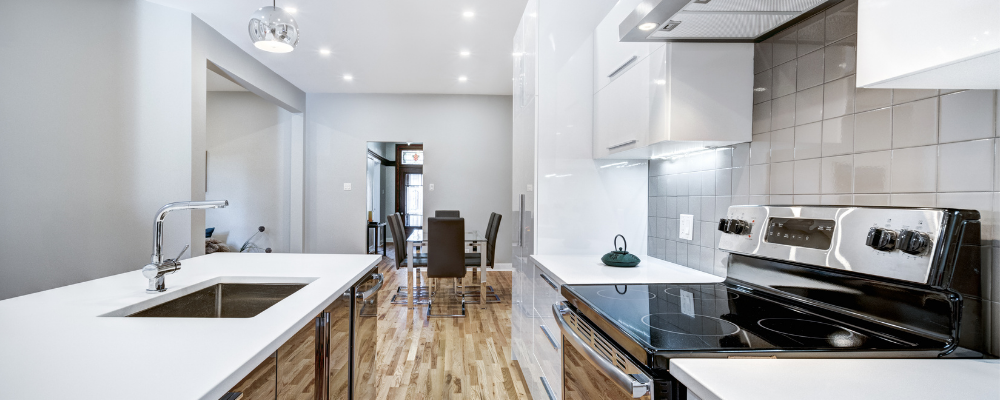
4. Government-backed Loans
FHA 203(k) loans are backed by the Federal Housing Administration (FHA), which means that these loans are insured by the FHA. They are supplied by private lenders who are FHA approved and are useful for buying a property and then rehabbing it.
The minimum value for renovation costs on this loan is $5,000 and the property you are purchasing will need to fall beneath the FHA loan limit in your area. The FHA limit on the average single-family home in 2022 in the majority of places is $420,680. In areas that are more expensive, the FHA limit can go up to $970,800.
Qualification criteria: Qualifying for an FHA 203(k) loan is similar to other FHA loans. Applicants will need a minimum credit score of 500 if they are making a 10% down payment, and 580 if they are making a 3.5% down payment.
5. Personal Loans
Unsecured personal loans can be used for a variety of purposes, one of which is to do rehab projects on houses. For those who have already secured funding for the purchase of the house, this can be the ideal option for taking care of the funding for the rehab that comes next. Personal loans allow you to finance your home improvements without using the property itself as collateral.
Funding is usually quicker than with other loan types, which is ideal for real estate investors looking to get a rehab project done quickly. Bear in mind though, interest rates on these loans are usually higher and there may be fixed interest rates on the loan.
For example, New Silver’s Personal Loans offer borrowers the chance to choose a personal loan from multiple lenders, and compare which would work best for them, all in one place. There is no collateral required for these loans and they can either be structured with terms, or as a line of credit for renovation projects. The flexibility of these loans makes them a useful tool for real estate investors.
Qualification criteria: A borrower will typically need a fair to good credit score to qualify for a personal loan, as the property isn’t being used as collateral. Your income and debt-to-income ratio can play a part in qualifying for these loans, and there is often an origination fee that you’ll need to pay to cover the costs of processing the application, running credit checks and closing the loan.
How do you borrow money for a renovation?
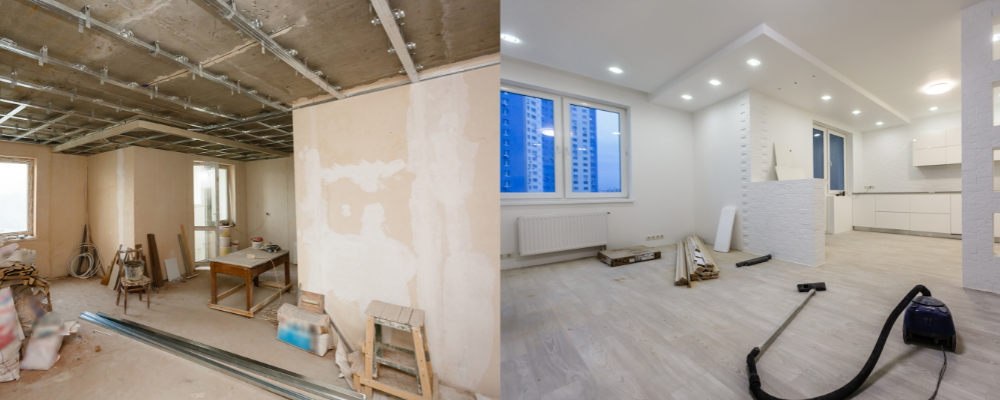
Step 1: Save for a down payment
This is a vital element of borrowing money, so that a lender knows that you’ve also got skin in the game and you’re a serious investor. Even if it means putting the project on hold for a little while, it’s better to have some cash saved up than trying to get a loan with nothing.
Step 2: Choose the right loan type
There are a variety of loans that you can use for a renovation, and these vary quite a bit. Take a look at your specific real estate investing strategy and find the loan that best matches your needs. For example, if you’re looking do a fix and flip project, then a fix and flip loan would be the best loan type for you.
Step 3: Pick a lender
Once you’ve figured out which loan is right for you, you’ll need to find a reputable and reliable lender to get the funds from. Make sure to find a lender who comes recommended, or someone who has a good track record and is legitimate. It’s also important to gel with the lender, in case you will be working with them on other projects.
Step 4: Apply and get funded
Once you’ve picked the right lender and decided on the loan type you want, you’ll need to take a look at the lending criteria specific to your lender. Get your ducks in a row so that you can fulfill these criteria and then apply for the loan. Once you’ve been approved for funding you can begin your renovation project.
Why don’t conventional banks offer fixer-upper home loans?
Banks typically won’t provide a loan for a fixer-upper project due to the fact that these loans are more than the value of the house. Banks usually play it safer with loans and only lend up to the total value of the home, and no more than that. So, while you can use a conventional loan to purchase the property, you’ll need to use another loan for the renovation itself.
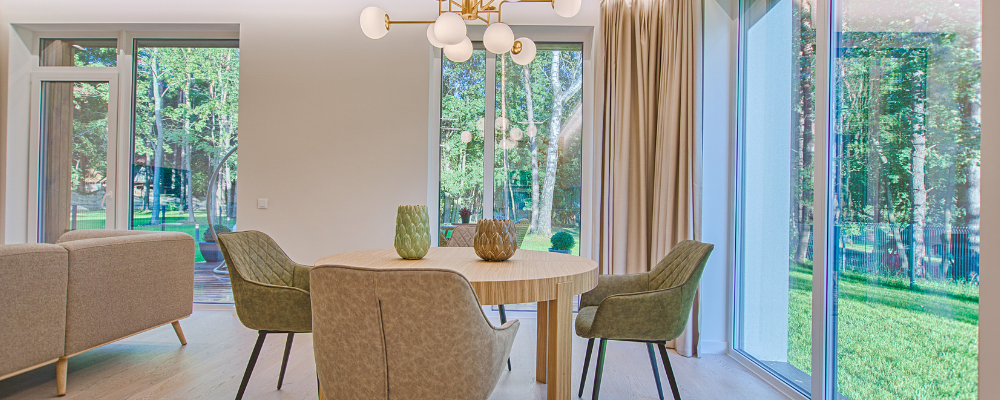
How to get a fixer-upper loan
The criteria used for qualifying for a fixer-upper loan vary according to each lender but here are a few tips for you, so that you have the best chance at getting loan approval:
- When it comes to credit requirements, credit scores of around 600 and upwards are a common requirement for these loans, so getting yours around this number is a good start. Some loans, like an FHA fixer-upper loan, only require a credit score of 500, but on the whole, 600 is a safer bet to focus on.
- Fixer-upper loans may require down payments of around 20%, so it’s important to make sure you have funds available for this down payment.
- Put together a list of the repairs and renovations you’ll be doing, a cost estimate and an idea of what the house will be worth once the renovations are complete. Many fixer-upper loans base their decision predominantly on how much the rehab project will improve the value of the house.
- The amount of investing experience you have is not a necessary requirement for some fixer-upper loans, however some may look into this. So, make sure that you check which loans don’t require previous experience if you’re new to real estate investing and select these ones. For seasoned investors this may not be an issue as you can simply supply evidence of your previous successful projects.
- Your debt-to-income ratio will need to be considered, as some lenders will require this to be lower than a specific percentage.
For certain fixer-upper loans, the property is used as collateral. In this case you will need to prove that the deal you’re making is a good one, and that you’re likely to make a profit and be able to pay off the loan within the given terms.
Final thoughts
Finding a loan for a fixer-upper project is not a difficult task, and once you’ve done your homework into how you can qualify for the loan type you’ve chosen, you should be headed towards a loan approval. Real estate investing is all about finding the right deal, in the right location and doing your homework. Applying for a fixer-upper loan is no different and these steps remain the key to your fixer-upper investing journey.

